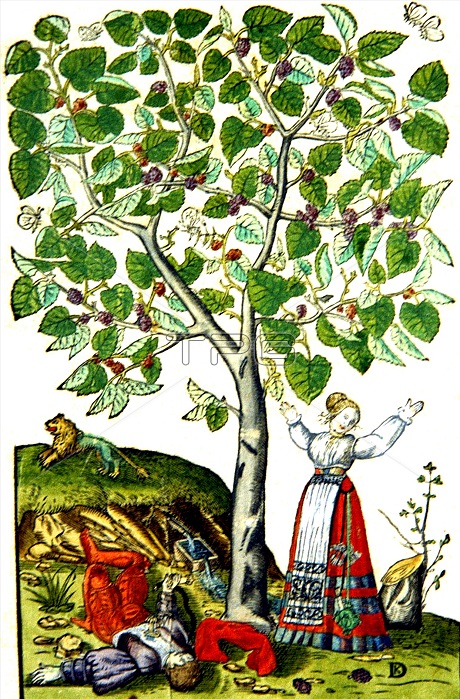
A scene from the Pyramus and Thisbe myth as described by Ovid. Thisbe arrives at the mulberry tree and throws up her arms at the sight of the dying Pyramus who lies next to the tree. The handle of a knife protrudes from his chest. Butterflies fly amidst the leaves of the fruitful tree and the lion is shown running away in the distance. Publius Ovidius Naso (43 BC-17/18 AD), known as Ovid, was a Roman poet best known as the author of the three major collections of erotic poetry: Heroides, Amores, and Ars Amatoria, and of the Metamorphoses, a mythological hexameter poem. He is considered a master of the elegiac couplet, and is traditionally ranked alongside Virgil and Horace as one of the three canonic poets of Latin literature. His poetry remains one of the most important sources of classical mythology. The exile of Ovid is one of the most mysterious events of what is now called Classical antiquity. In 8 AD he was banished from Rome to Tomis, on the shores of the Black Sea, by decree of the emperor Augustus, but for reasons never definitively answered. In exile, Ovid wrote two poetry collections titled Tristia and Epistulae ex Ponto, illustrating his sadness and desolation. Being far from Rome, he had no access to libraries, and thus might have been forced to abandon the Fasti poem about the Roman calendar, of which only the first six books exist - January through June. He died 17 or 18 AD, at the age of 58 or 60.
| px | px | dpi | = | cm | x | cm | = | MB |
Details
Creative#:
TOP22160543
Source:
達志影像
Authorization Type:
RM
Release Information:
須由TPG 完整授權
Model Release:
No
Property Release:
No
Right to Privacy:
No
Same folder images:

 Loading
Loading